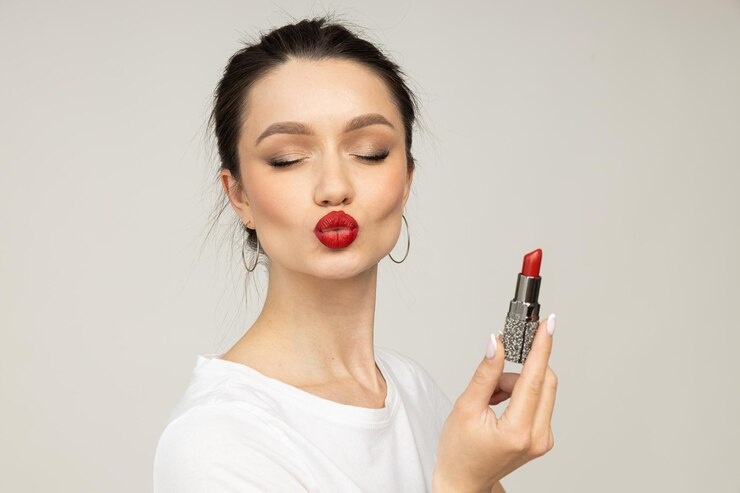Lipstick Basics: A Beginner’s Guide to Shades, Textures, and Finishes
Lipstick has been a part of beauty traditions for centuries, dating back to ancient civilizations like Mesopotamia and Egypt, where natural pigments were used for lip coloring. Over time, lipstick has evolved into one of the most popular and accessible cosmetics worldwide. Today, it exists in countless shades, textures, and finishes, making it both a creative tool and a form of self-expression.
For beginners, however, the sheer variety of lipsticks can feel overwhelming. Terms like “matte,” “satin,” “glossy,” or “nude undertones” can be confusing without some guidance. Understanding the basics helps anyone choose the right lipstick confidently and use it effectively.
Importance
Lipstick plays a unique role in personal style and confidence. It is often one of the simplest ways to elevate a look without requiring complex makeup skills. From professional settings to social events, lipstick can influence how people feel and present themselves.
Its importance can be seen in several aspects:
-
Personal Expression: Colors and finishes reflect mood, personality, or occasion.
-
Accessibility: Lipstick is often affordable, making it an entry point into makeup for beginners.
-
Cultural Significance: Different shades carry symbolic meanings across regions and traditions.
-
Economic Role: The lipstick industry is a major segment of global cosmetics, influencing trends and fashion.
By understanding the basics, individuals can make choices that are suitable for their skin tone, lifestyle, and personal preferences.
Recent Updates
The lipstick market has seen noticeable changes over the past year:
-
Shift Toward Natural Ingredients (2023–2024): Consumers are increasingly choosing lipsticks made with plant-based oils, waxes, and fewer synthetic additives.
-
Hybrid Lip Products: Recent launches combine skincare with makeup, such as lipsticks infused with vitamin E or SPF protection.
-
Digital Shade Matching (2024): Beauty apps and online stores now use AI tools to recommend lipstick shades based on selfies.
-
Sustainable Packaging: Brands are introducing refillable lipstick cases or recyclable packaging to reduce environmental impact.
These changes reflect broader trends in conscious consumption and the blending of beauty with technology.
Laws or Policies
Lipstick manufacturing and sales are influenced by cosmetic regulations, which vary from country to country.
-
United States: The Food and Drug Administration (FDA) oversees safety standards for cosmetic ingredients. Certain color additives must be FDA-approved for use in lip products.
-
European Union: Cosmetic products must comply with the EU Cosmetics Regulation (EC No. 1223/2009), which strictly controls labeling, safety testing, and banned substances.
-
India: The Bureau of Indian Standards (BIS) regulates safety standards, including limits on heavy metals like lead in lipstick.
-
Global Initiatives: Increasingly, countries are encouraging cruelty-free testing methods, restricting animal testing in cosmetics.
These laws ensure that lipsticks remain safe for use, while also shaping how products are marketed and manufactured.
Tools and Resources
Beginners can use several tools and resources to better understand lipstick shades, textures, and finishes:
-
Virtual Try-On Apps: Many beauty retailers (e.g., Sephora, Nykaa) offer AR-based lipstick try-ons.
-
Shade Finder Calculators: Online tools that recommend colors based on undertone and skin type.
-
Makeup Tutorials: Educational content on platforms like YouTube offers practical demonstrations of application.
-
Color Wheel Charts: Useful for understanding undertones and complementary colors.
-
Lipstick Journals/Planners: Some apps and templates allow users to keep track of favorite shades and finishes.
Example Table: Common Lipstick Finishes and Their Characteristics
| Finish Type | Look on Lips | Longevity | Comfort Level | Best For |
|---|---|---|---|---|
| Matte | Flat, bold color | Long-lasting | Can feel dry | Professional or bold looks |
| Satin | Slight sheen | Medium | Comfortable | Everyday wear |
| Gloss | Shiny, reflective | Short | Lightweight | Casual or youthful looks |
| Cream | Smooth, opaque | Medium | Moisturizing | Dry lips |
| Sheer | Soft, translucent | Short | Very light | Natural makeup styles |
FAQs
Q1. What’s the difference between matte and satin lipstick?
Matte lipsticks have no shine and provide bold, long-lasting color, while satin lipsticks offer a slight sheen and feel more hydrating.
Q2. How do I choose a shade that suits my skin tone?
A general guide is: warm undertones match well with coral, peach, or warm reds, while cool undertones pair better with berry, mauve, or blue-based reds. Neutral undertones can wear almost any shade.
Q3. Are expensive lipsticks always better than affordable ones?
Not necessarily. Both drugstore and high-end brands offer quality lipsticks. Factors like texture, longevity, and comfort matter more than price alone.
Q4. Can lipstick expire?
Yes. Most lipsticks last 1–2 years after opening. If a product changes smell, texture, or color, it’s best to replace it.
Q5. What’s the best way to make lipstick last longer?
Prepping lips with a balm, applying lip liner, and blotting with tissue between layers can extend wear time.
Conclusion
Lipstick is more than a cosmetic—it is a versatile tool that blends art, culture, and personal expression. For beginners, learning about shades, textures, and finishes provides the foundation to explore confidently.
As the industry evolves, new trends such as natural formulations, AI-powered tools, and sustainable packaging are making lipstick more accessible and aligned with modern values. By combining knowledge with experimentation, anyone can find the perfect lipstick that complements both style and personality.